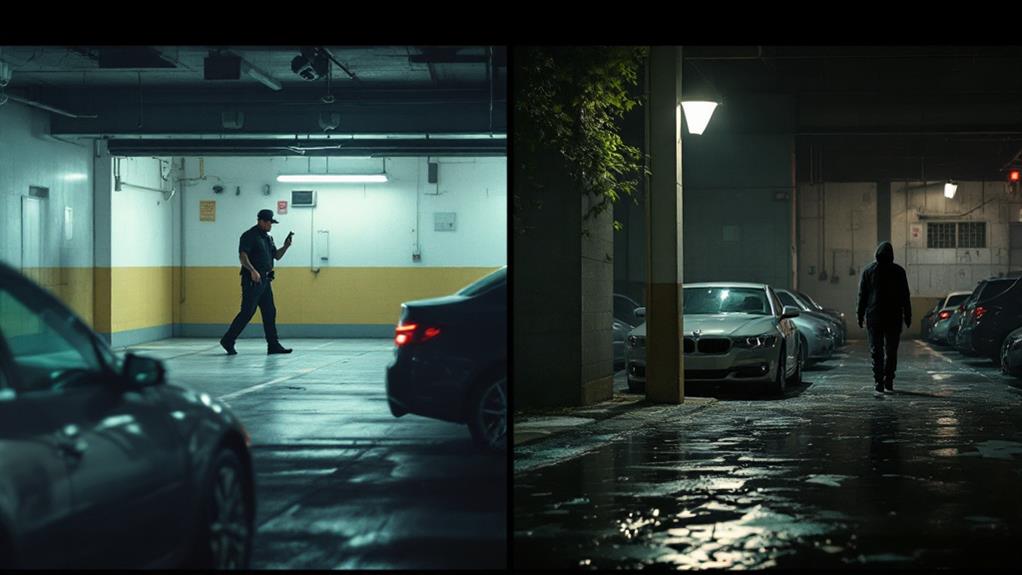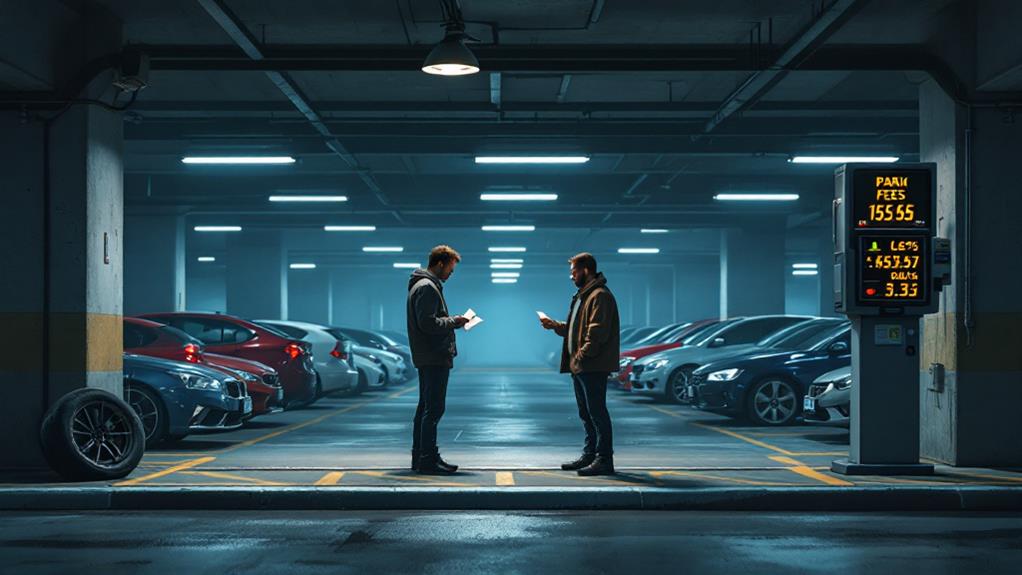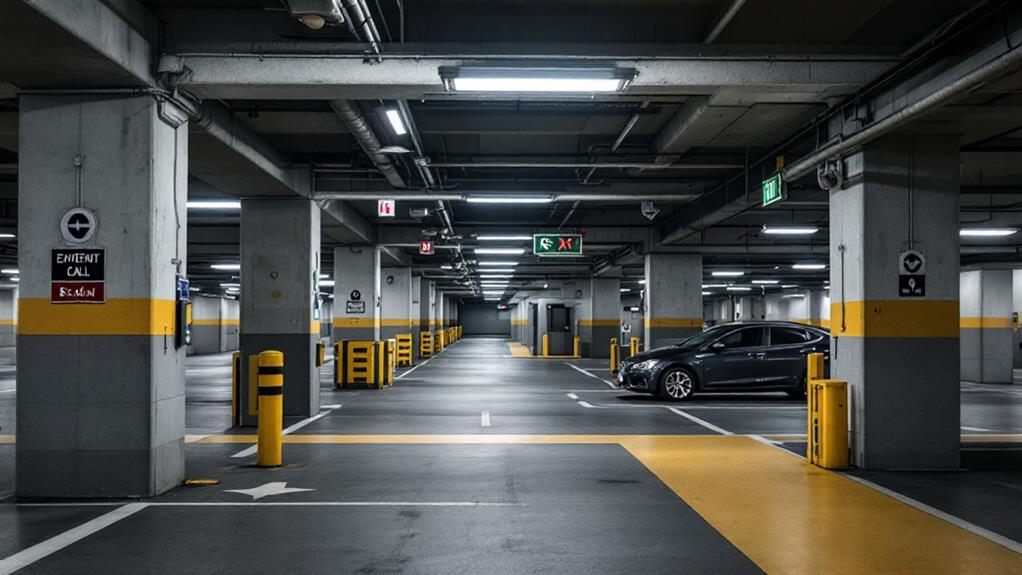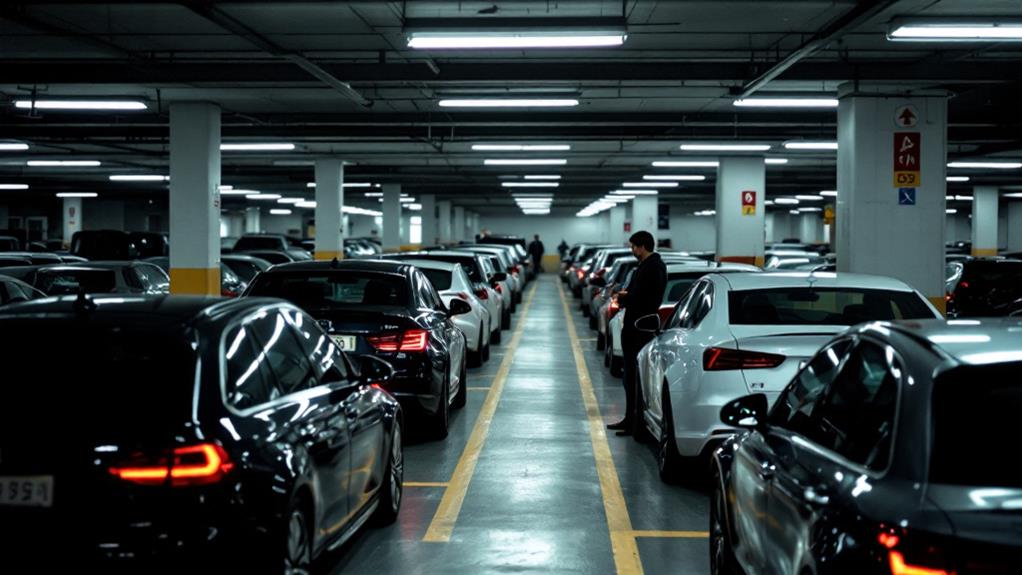How to Avoid Parking Damage in a Public Garage
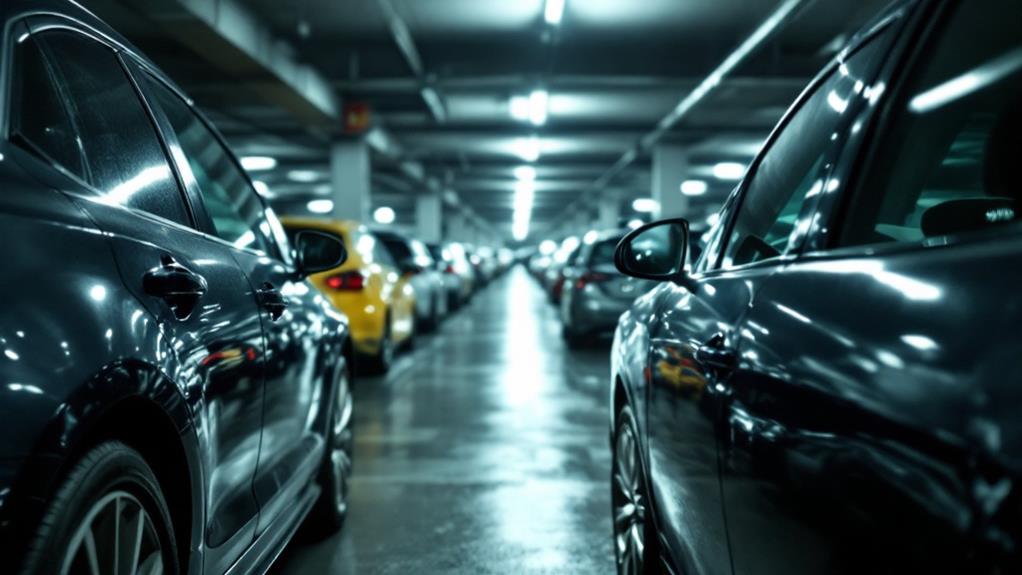
To avoid parking damage in a public garage, choose your spot wisely. Look for spaces with ample room on both sides and opt for corner spots when possible. Leverage your car's technology, including backup cameras and parking sensors, to navigate tight spaces precisely. Become adept at reverse parking techniques to minimize risks. Stay alert and aware of your surroundings at all times, anticipating potential hazards. Adapt your driving style to the confined garage environment, maintaining a slow and cautious speed. Protect your vehicle's exterior by using door guards and parking away from neglected cars. By implementing these strategies, you'll drastically reduce the chances of unwanted dings and scratches.
Choose Strategic Parking Spots
Vigilance is key when choosing a parking spot in a public garage. To protect your vehicle from damage, you'll need to pay attention to your surroundings and select strategic parking spots. In a public parking garage or parking lot, look for spaces with enough room on both sides to open your doors comfortably without risking contact with adjacent vehicles.
Opt for corner spots in the parking lot or garage, as they provide protection on one side and reduce the risk of car accidents or door dings. When selecting a space, avoid parking next to vehicles with doors that open towards yours. Instead, seek out spots near well-maintained cars, such as other Saab vehicles, as their owners are likely to be more cautious.
Be wary of parking spots next to neglected vehicles, family cars, or those with tow bars, as they pose a higher risk of causing damage. By choosing your parking spots wisely, you'll minimize the chances of returning to find unwelcome scratches or dents on your car. Remember, taking a few extra moments to find the right spot can save you from costly repairs and frustration in the long run.
Utilize Technology for Precision
While traditional parking techniques remain precious, modern technology has revolutionized the way we park in tight spaces. When maneuvering through public parking garages, you can harness various technological aids to enhance your precision and avoid damage to your vehicle.
Start by using your car's backup camera and parking sensors when navigating into parking spaces. These features provide visual and audible cues, helping you gauge distances and detect obstacles in tight spots. Ultrasonic sensors are particularly useful, alerting you to potential hazards before they become an issue.
For an even clearer view of your surroundings, employ surround-view camera systems. These offer a 360-degree viewpoint, allowing you to see your car's position relative to neighboring vehicles and garage structures. This technology is invaluable for eliminating blind spots and ensuring you're centered within your chosen spot.
If your vehicle is equipped with automated parking features, consider using them when parking your car in challenging spaces. These systems can take over steering, reducing the risk of human error when parking next to other vehicles or pillars. By embracing these technological aids, you'll significantly improve your spatial awareness and dexterity in constricted parking garages.
Master Reverse Parking Techniques

Reverse parking is a critical skill that can greatly reduce the risk of damage in public garages. When you park next to another car in a public lot, it's essential to control this technique to avoid costly accidents. To start, slowly back into the spot, using your mirrors and turning the steering wheel sharply to center your vehicle. This method allows for better visibility and control when exiting a tight parking space later.
As you maneuver, look over your shoulder and through the rearview mirror to monitor your car's position and path. If your vehicle is equipped with parking sensors or a rearview camera, use these tools to guide you into the space without touching other cars. Pay close attention to the space between your car and nearby vehicles to maintain a safe distance.
To build confidence and skill, practice reverse parking in low-risk areas before attempting it in a crowded garage. With time and practice, you'll become proficient at navigating tight parking situations, reducing the likelihood of damaging your car or others in public garages. Remember, controlling this technique will help you park near other vehicles safely and efficiently.
Maintain Vigilant Situational Awareness
Maintaining situational awareness is essential when traversing a public parking garage. As you plunge through the rows of parked cars, continuously scan your surroundings for potential hazards. Keep an eye out for pedestrians, other vehicles, and obstructions that may suddenly appear in your path. Be prepared to react quickly to unexpected situations.
In a public garage, you'll need to anticipate the actions of other drivers. Watch for cars that might reverse or change directions without warning, and adjust your driving accordingly. Pay close attention to the position and movement of neighboring vehicles to certify you can safely maneuver in and out of parking spaces.
To maintain vigilance, avoid distractions like mobile devices or loud music that could divert your attention from the critical task of steering safely. Keep your focus on your surroundings at all times. Maintain a slow, cautious speed and be ready to brake quickly to accommodate the unpredictable nature of a crowded parking environment. By staying alert and aware, you'll be better equipped to avoid collisions and protect your vehicle from damage in a public parking garage.
Adapt Driving for Garage Conditions

Adaptability is key when traversing the unique challenges of a public parking garage. When you enter, slow down and adjust your driving style to accommodate the confined space. Make sure you're able to see clearly in all directions, as visibility can be limited due to low ceilings and tight corners. Use your headlights, even during the day, to improve your visibility and guarantee others can see you.
As you maneuver through the parking lots, be prepared for sudden stops and unexpected obstacles. Keep an eye out for:
- Pedestrians walking between parked cars
- Vehicles backing out of spaces without warning
- Support columns that can obstruct your view
When you find a spot to park your car, take extra care to position it properly. Pull in slowly and straighten your wheels to avoid scraping against concrete barriers or neighboring vehicles. If possible, back into the space for easier exit later. Always double-check your surroundings before opening your door to prevent dinging adjacent cars.
Protect Your Vehicle's Exterior
Safeguarding your car's exterior is crucial when parking in public garages. To protect your vehicle from dings and dents, consider investing in car door protectors or guards. These accessories absorb impacts, helping you avoid costly repairs. When selecting a parking spot, it's best to avoid parking in tight, cramped spaces. Instead, look for areas with ample room on both sides of your vehicle. This reduces the risk of other car owners opening their doors without hitting yours.
Try to avoid parking next to neglected or family cars, as these may have less cautious door openers. Choose well-lit spots covered by surveillance cameras to deter potential damage and guarantee your car's safety. Maintaining your vehicle's appearance can also discourage others from parking too close or carelessly opening their doors.
As you travel through the garage, be mindful of surrounding vehicles' condition and behavior. By being aware of your environment and taking these precautions, you'll considerably reduce the risk of exterior damage to your car. Remember, a little extra effort in protecting your vehicle can save you from costly repairs and frustration in the long run.
Navigate Tight Spaces Carefully
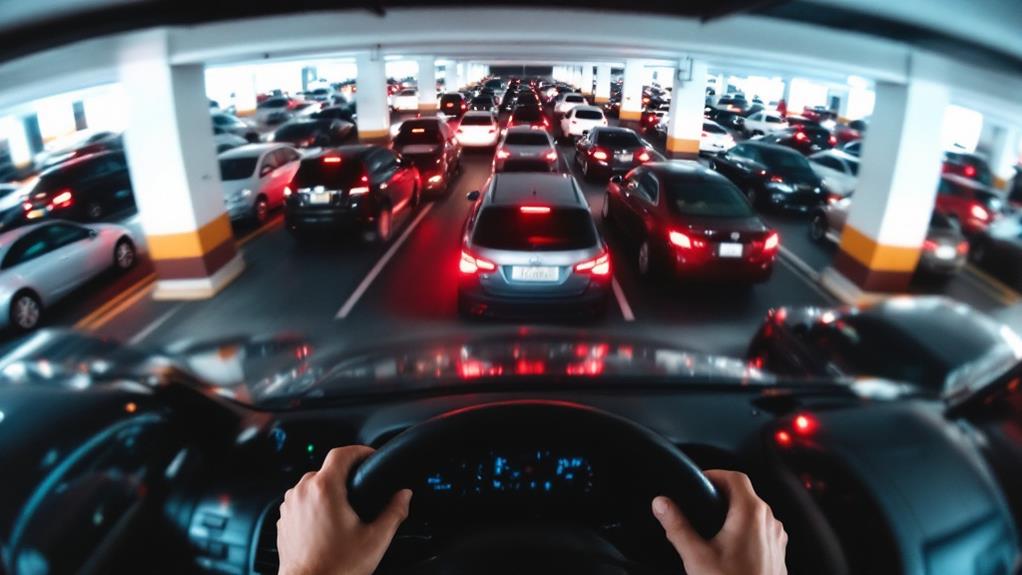
Maneuvering tight spaces in public garages often requires extra caution and skill. When you're looking for a spot in a crowded public garage, it's best to park in areas that offer extra space around your vehicle. This reduces the risk of door dings and bumper damage from cars parked too close.
As you traverse through the garage, keep an eye out for:
- Well-lit areas that are frequently monitored
- Spots covered by surveillance cameras
- Wider spaces away from tight corners
These locations not only provide better protection for your car but also make it easier to maneuver in and out of your parking spot. When you find a suitable space, take care when opening your doors to avoid contact with the car next to you. If you're concerned about doors that open into your vehicle, consider investing in car door protectors or guards.
